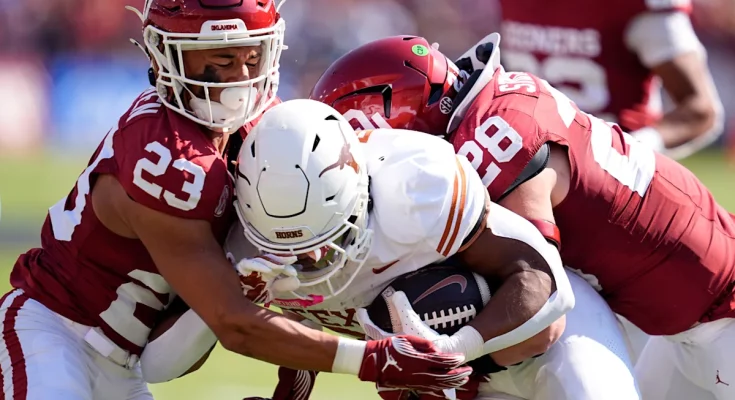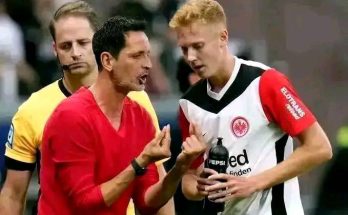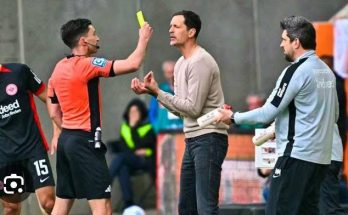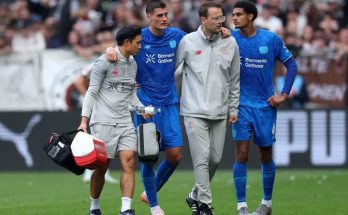The Oklahoma Sooners are once again staring down a problem they hoped to avoid: the injury bug has come back with a vengeance, and this time it’s struck the heart of their offensive identity—the running backs. With the 2025 college football season fast approaching and expectations sky-high as Brent Venables enters a pivotal year at the helm, this untimely development is setting off alarms in Norman. What was once believed to be a deep and balanced backfield now looks vulnerable and untested. The question that looms large isn’t just whether the Sooners can adjust—it’s whether fans should brace themselves for a season defined not by triumph but by attrition.
Running backs are often the lifeblood of a balanced college offense. They provide insurance when the passing game stalls, serve as a safety valve for young quarterbacks, and bring physicality that energizes a team and a fanbase. For Oklahoma, a program with a rich history of elite backs from Adrian Peterson to Samaje Perine and Rodney Anderson, the position holds more than just tactical value—it’s a symbol of toughness and tradition. Coming into 2025, there was optimism. The Sooners had built what appeared to be a formidable group of ball carriers, mixing power, speed, and experience. But that confidence is now giving way to concern.
Reports out of fall camp confirm the worst: multiple injuries have hit the running back room, and they’re not minor. Marcus Major, the veteran presence expected to take on a leadership role and carry much of the early-season load, is reportedly nursing a lower body injury that could sideline him well into the first few weeks of the season. Major’s absence isn’t just about missing carries—it’s a major blow to continuity, locker room stability, and game-readiness for the rest of the unit. Behind him, Jovantae Barnes, the promising sophomore who flashed brilliance last year, is also dealing with lingering soreness in his surgically repaired foot. While not officially ruled out, his status is murky, and the coaching staff is understandably hesitant to rush him back too quickly.
Add to that the uncertain recovery timeline for Gavin Sawchuk, another dynamic runner who was expected to split carries and bring explosiveness to the ground game. Sawchuk’s been described as “day-to-day” for several weeks now, and if we’ve learned anything from college football semantics, it’s that “day-to-day” can quietly turn into “week-to-week” or even “out indefinitely.” Injuries in August are tricky: they may appear minor, but when piled together and factored into an offensive scheme that relies heavily on momentum, chemistry, and consistency, they can spiral into systemic problems.
This rash of injuries has pushed younger, untested players into bigger roles before they’re ready. Freshmen like Xavier Robinson and Caleb Hicks, while promising, are now being asked to step into live-action reps far earlier than anyone envisioned. No one doubts their talent—after all, Oklahoma doesn’t recruit lightly at any position—but there’s a stark difference between being prepared in theory and being game-ready against SEC-caliber defenses. Without a proven lead back to stabilize the rotation, these young runners are being thrown into the fire, and the results could be volatile.
What complicates matters even more is Oklahoma’s upcoming schedule. With a transition into the SEC this season, there’s little margin for error. Every week is a grind, and the physical toll of facing elite defensive fronts like Alabama, Georgia, and LSU only amplifies the urgency to have a stable ground game. A weakened running back group could make the Sooners one-dimensional on offense, forcing an even greater burden on the quarterback—presumably Jackson Arnold—to carry the team through the air. That’s a risky proposition for any program, but especially one still re-establishing itself among college football’s elite.
It also raises tactical dilemmas for offensive coordinator Seth Littrell. With the ground game compromised, does he lean more into a pass-heavy scheme that might expose the quarterback to more hits and turnovers? Or does he try to establish the run anyway, hoping that makeshift combinations of young backs and creative blocking schemes can cobble together enough production to keep defenses honest? Either choice carries significant risks, and there’s no obvious answer.
There’s also the psychological element to consider. A team’s identity is often shaped in camp. Injuries don’t just alter depth charts—they can shake morale. The players know when things are off. They feel it in practice when a drill ends in silence instead of celebration, or when a key leader limps off the field. A battered backfield can lead to tension across the offensive line, increased pressure on special teams to flip field position, and subtle shifts in the confidence level of the entire roster. And if things don’t click early in the season, the media scrutiny will intensify, fans will grow restless, and the locker room could splinter under expectations unmet.
For now, the official line from Norman is what you’d expect: next man up, we believe in our depth, we’re not making excuses. But behind closed doors, it’s clear that contingency plans are being developed. There’s already speculation that Oklahoma may hit the transfer portal once again, either now or during the midseason window, to find a veteran back who can help patch the hole. That’s not ideal—it’s reactive, not proactive—but given the current state of affairs, it may be a necessity rather than a choice.
And what about Sooner fans? Should they panic? Not quite yet—but they should definitely be concerned. This isn’t just a case of one injury—it’s a cluster of setbacks at a crucial position in a conference where toughness and depth are king. There’s still time for players to heal, and the season hasn’t begun. But optimism must be tempered with realism. For Oklahoma to compete at the level expected of them, they can’t limp into September—literally or figuratively.
The running back room is in trouble, and that trouble has ripple effects across every facet of the team. The offensive line may have to do more than they were asked to do. The receivers may be expected to carry more of the load. The quarterback’s development could be sped up unnaturally. The defense may be leaned on in low-scoring games, potentially changing the team’s identity midseason. In short, everything gets harder when the engine of your offense is sputtering before the first snap.
This moment will be a test for Brent Venables and his staff. Not just of their recruiting chops or play-calling creativity, but of their resilience, adaptability, and leadership. Can they hold the team together? Can they find a way to extract production from chaos? Can they turn adversity into a rallying cry rather than a death knell? Those are the questions that will define the season ahead.



